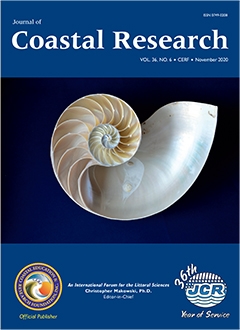Shell of a chambered nautilus (Nautilus pompilius; section cut taken at the natural vertical half-shell level). The Nautilidae family has a temporal range from today going all the way back to the Triassic period some 225 million years ago. This means they even predate the Jurassic and Cretaceous periods known in popular culture for its dinosaur-stars of films, such as Jurassic Park. Geographically they can be found around much of the South Pacific, where they tend to live in scantly lit deep waters of around 300 m for most of their life and migrating vertically up during the night to forage around the deeper fringes of tropical coral reefs. Due to this rather cryptic lifestyle, we are only just beginning to learn more about the lives of these amazing creatures. Unfortunately, due to human-induced pressures on the nautilus species, they were moved to the Convention on International Trade in Endangered Species of Wild Fauna and Flora (CITES) Appendix II list in 2016.
They share a lot of similarities with the extinct ammonites in the way their shell is structured. As the inhabitant of the shell grows, it inhabits only the newer, larger chambers, using the smaller abandoned chambers for buoyancy control by means of regulating the volume and density of the liquid within them. To this end, one can see in the picture above a small opening at the middle of each chamber section through which the siphuncle would have run. It was long held that the esthetically pleasing spiral displayed by the shell in its entirety was a perfect representation of the famed golden spiral. This, however, is incorrect. Though the general representation in a polar equation for the golden spiral is the same as that for the logarithmic spiral in radians, being r = a·ek θ the growth factor (k) of the golden spiral is 0.31, with a being the base radius, θ the angle and e the natural logarithmic base. A quick curve optimisation calculation by the author using the present photograph as input data puts the value of k here at 0.18. So, even though the distances between the turnings of the golden and the (more general) logarithmic spiral increase in geometric progression, the speed with which this happens differs. The logarithmic spiral can be found in many natural phenomena of coastal research, such as with shell shapes, cyclone bands, logarithmic spiral beaches, etc. It is not only aesthetically pleasing to find these mathematical echoes throughout such diverse scientific fields, but it may also help to explain why people are so drawn to spirals and their natural incarnations in the more aesthetic manifestations of the arts. Perhaps by recognising the mathematical beauty of this spiral as Jacob Bernoulli did in naming it “Spira Mirabilis” or the “Marvelous Spiral,” it can help to awaken people's curiosity and draw in another generation into Science, Technology, Engineering, and Math. . . and with some luck into the exciting field of Coastal Engineering. It is a marvelous world out there and some, like the nautilus shell, display it with a glorious logarithmic spiral. (Photograph taken June 2020 by Erik Van Wellen, Maverick Enterprise, Antwerpen, Belgium.)






